Choosing the Perfect Microphone for YouTube Videos
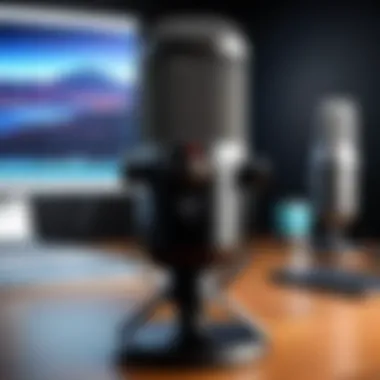
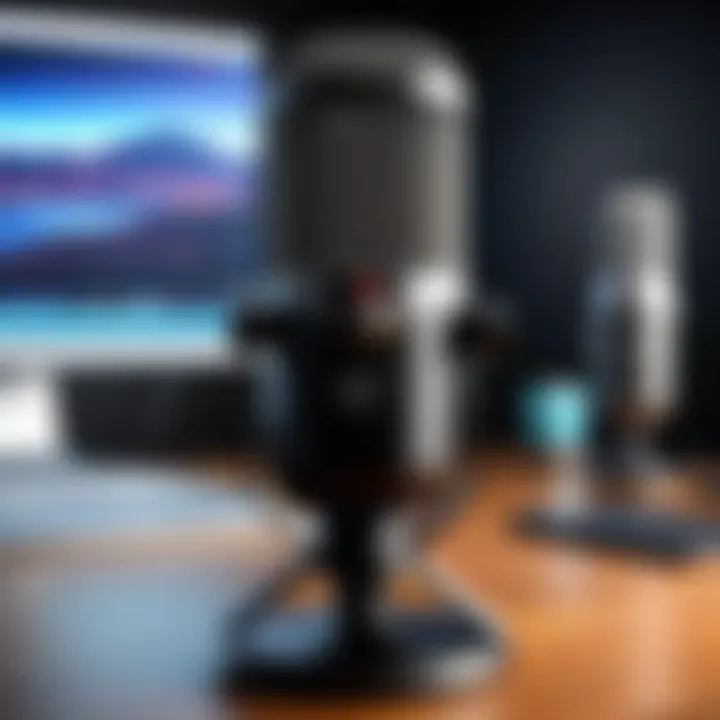
Intro
When it comes to creating engaging YouTube content, audio quality often takes a backseat to visual aesthetics. Yet, it is the very sound that keeps viewers hooked, making them revisit your channel time and again. Choosing the right microphone can elevate your production value significantly, allowing your voice to resonate clearly and comfortably through the digital ether.
In this guide, we will explore the pivotal role that microphones play in YouTube content creation. Whether you're vlogging from your living room, streaming gameplay, or conducting interviews, the correct microphone can assist in crafting your unique auditory identity.
We'll peel back the layers on various types of microphones, examine what to look for when narrowing down your options, and present tailored recommendations for different types of content creators. This comprehensive examination aims to furnish both novices and veterans alike with all the knowledge they require to optimize their audio setup.
Key Points to Cover
- Types of Microphones: From dynamic to condenser models, each category offers distinct values.
- Factors to Consider: Room acoustics, budget constraints, and compatibility with existing gear can shape your choice.
- Top Models for Creators: We’ll share insights into popular models tailored for diverse content styles.
- Impact on Engagement: We'll explore how high-quality audio not only enhances the viewer experience but also influences audience retention.
Perhaps, after reading, you might view microphones not just as peripheral tools but as essential allies in your journey as a YouTube creator. Let's dive in!
Prelims to YouTuber Microphones
When it comes to creating content for YouTube, a top-notch microphone can make a world of difference. This section will take you through the essence of why microphones should be on every content creator's radar. It’s not just about appearing in front of a camera; audio quality often weighs heavier than visuals in the audience's overall experience. Clarity and richness in sound can elevate your videos from amateur to professional in a heartbeat.
In this noisy world filled with distractions, poor audio often leads to frustrated viewers who quickly click away. It’s as simple as that. Imagine zoning into a video only to be met with muffled sounds or echoes that make you crank up the volume. It’s incredibly easy for potential subscribers to swipe left when they feel the audio quality just doesn't cut it. So, maintaining decent sound quality is crucial for viewer retention—something every serious content creator should prioritize.
The Importance of Sound Quality
Sound quality is the backbone of any YouTube content. Let’s face it; no one wants to listen to a video that sounds like it was recorded through a tin can. A quality microphone captures the nuances of your voice, the subtle inflections that bring life to your storytelling. Good sound helps to communicate your message with crystal clarity, which is vital in keeping your audience engaged.
You can dress up your visuals all you want, but if the audio is shoddy, the overall impression diminishes. Think of the last time you turned off a video. Was it due to irritating background noise or a voice that was hard to understand? Most likely, yes. Here are some key pointers to consider regarding sound quality:
- Clarity and Detail: The right microphone captures the intricacies of your voice, making your content sound polished.
- Reduced Background Noise: Quality mics enable you to isolate your voice while minimizing ambient sounds.
- Consistency: Good microphones deliver a steady level of audio without the annoying fluctuations.
- Professionalism: High-quality audio elevates your brand, making you appear more credible to potential viewers.
"Your microphone transforms your little corner of the internet into a space where your voice can truly be heard."
When content creators prioritize sound, they experience not just better engagement but also a rise in subscriptions. Content that resonates affects viewer perception, shaping how they see you as a creator. As we proceed to explore different types of microphones, remember that not all are created equal. Carefully considering the specifics can set the right tone for your channel.
Understanding Microphone Types
When it comes to crafting compelling YouTube content, understanding the different microphone types is paramount. Each microphone type has its unique characteristics, leading to varied audio delivery, which can directly influence viewer engagement. Content creators must carefully consider their specific needs, content style, and production environment.
Using the right microphone type can certainly elevate the overall quality of your content. For instance, a vlogger capturing outdoor experiences might need a shotgun microphone for its directional capabilities, while a gamer streaming indoors might prefer a condenser microphone for its sensitivity and rich sound reproduction. The following sections will provide a comprehensive overview of the core types of microphones available, helping both novice and seasoned creators to make informed choices.
Dynamic Microphones
Dynamic microphones are often seen as the tanks of the audio world. They handle high sound pressure levels with ease, making them ideal for loud environments like concerts and sporting events. The microphone's design typically involves a diaphragm connected to a coil suspended in a magnetic field, converting sound waves into electrical signals. This mechanical setup means dynamic mics don’t require external power, offering convenience in setup and use.
Content creators looking for versatility might find dynamic microphones useful due to their durability and resistance to moisture. They are particularly effective for capturing vocals and instruments in a live setting. However, they may not be as sensitive as other types, so in quieter environments, some details might get lost.
Condenser Microphones
If dynamic microphones are the tanks, then condenser microphones are the sensitive souls of the bunch. These mics use a capacitor to convert sound into an audio signal, which allows for greater sensitivity and a broader frequency response. They capture subtleties in voice and sound, making them a popular choice for studio recordings and voiceovers.
These are ideal for YouTube content creators who focus on storytelling or acoustic performances. The downside? They tend to be pricier and usually require phantom power, which might be a consideration for those on a tight budget.
Lavalier Microphones
Lavalier microphones can be game changers, especially for those creating tutorial videos or interviews. Often small and clip-on, they easily attach to clothing, providing a hands-free option for content creators. Their design allows for decent sound capture while remaining discreet.
In situations where movement is key, such as cooking demos or on-location interviews, lavalier microphones won’t hinder your flow. However, they tend to pick up more ambient sound, so careful placement is essential to avoid unwanted noise.
USB Microphones
In the age of digital content creation, USB microphones have emerged as a convenient choice for both beginners and seasoned pros. These mics connect directly to computers, making setup a breeze. With many models available that offer decent sound quality for a budget-friendly price, USB microphones are appropriate for podcasters and YouTubers alike.
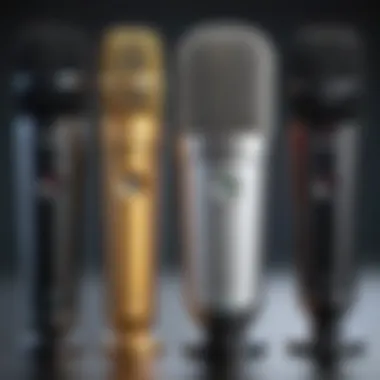
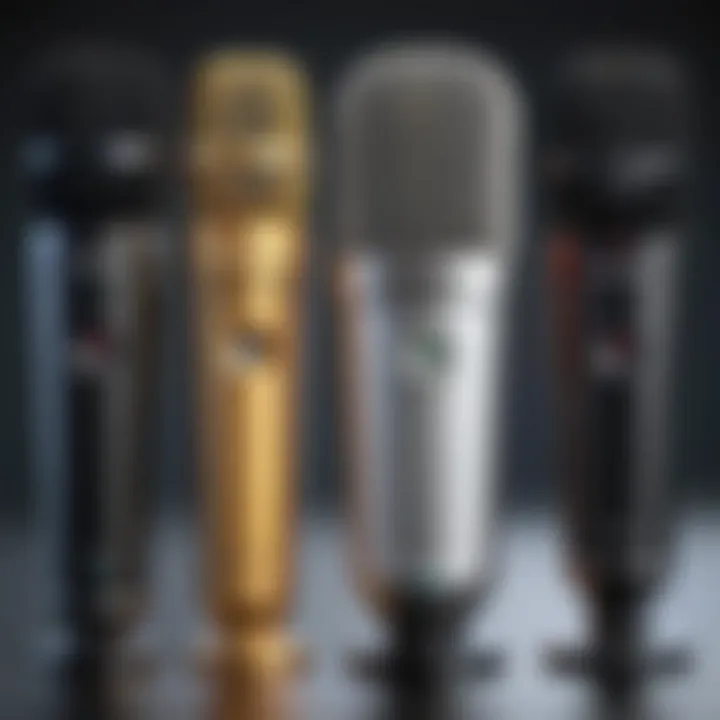
One must consider the trade-offs; while convenient, they may not provide the same audio quality as their XLR counterparts. But for creators who prioritize ease of use and mobility, USB microphones can be a sound choice.
Shotgun Microphones
When precision in audio capture is essential, shotgun microphones come to play. Their highly directional pickup pattern allows them to capture sound from a specific area while rejecting background noise. They're excellent for documentaries, outdoor shoots, or YouTube videos that require focused audio.
However, these microphones need to be aimed correctly, and their performance can decline if the sound source moves too far out of the pickup area. Therefore, they require some level of technical know-how to optimize their usage effectively.
Key Factors in Selecting a Microphone
When it comes to selecting the right microphone for your YouTube channel, there are several crucial elements that inform your decision. A microphone is not just a piece of equipment; it’s an integral component of your content creation process that can have a profound impact on how your audience perceives your videos. By carefully evaluating these factors, you can ensure that you select a microphone that meets your specific needs while enhancing overall audio quality.
Purpose and Use Case
Before making any purchase, clarify what you aim to accomplish with your microphone. Is it for voiceovers, vlogs, interviews, or live streaming? Each scenario might necessitate a different type of microphone. For instance, dynamic microphones are fantastic for live environments, as they can handle high sound pressures well and minimize background noise. On the other hand, condenser microphones excel in studio settings due to their sensitivity and ability to pick up nuanced sounds.
Consider how you plan to use the microphone. Will you need to move around a lot while recording? If so, a lavalier microphone might be your best bet, allowing you to stay hands-free. Alternatively, a shotgun microphone could be suitable for focused dialogue in a controlled environment. Each use case considerably shapes your requirements.
Budget Considerations
The price tag on a microphone can vary widely—from affordable models like the Blue Snowball to high-end options such as the Shure SM7B. Establishing a budget is essential to narrowing down your choices. It’s tempting to think that a higher price means better quality, but that’s not always the case.
Think about what features are most critical for your needs. Sometimes, spending a little more on a mic with good build quality, a decent frequency response, or a mic that suits your recording environment could save you more in the long run—especially if you need to replace cheaper, less effective equipment. Look for mics that come with warranties or those used by established content creators, which can provide solid choices within various price ranges.
Audio Interface and Connectivity
Understanding how your microphone connects to your setup is another pivotal consideration. Do you need a USB microphone that can plug straight into your computer? Or are you looking for an XLR microphone that requires an audio interface?
The choice here can affect both quality and convenience. XLR connections tend to offer superior audio quality and flexibility but generally need an additional audio interface, which can further increase your costs. Ensure that whatever microphone you choose, the necessary connectivity—be it USB, XLR, or Jack—is compatible with your gear.
Portability and Handling
Another factor that can’t be ignored is the ease of handling and portability. If you’re a mobile content creator or filming in various locations, you’ll want something lightweight and easy to set up. Consider the microphone design and whether it comes with accessories like stands or mounts.
Some microphones are designed to be compact, making them ideal for travel. Others may be more cumbersome but might offer superior sound capture. Finding the right balance is paramount. Here’s a quick rundown of options:
- Lightweight options for easy travel
- Built-in mounting systems for on-the-go setups
- Durable construction that can withstand moving around
"Selecting the right microphone isn’t just about sound; it’s about fit—fit for your style, fit for your needs."
As you weigh these factors, remember that each element can play a vital role in your overall success as a YouTuber. The right microphone can elevate your content, making it more engaging and professional while also creating clarity in communication. When you take the time to consider purpose, budget, connectivity, and handling, you’ll step closer to making an informed choice that supports your creative vision.
Microphone Features to Consider
When it comes to YouTube content creation, not every microphone is a one-size-fits-all solution. Instead, potential buyers should pay keen attention to specific features that can make or break the audio experience. Evaluating these features is essential, as the right specifications can lead to crisp sound that captivates viewers and delivers your message more effectively. Let’s break down some key features that should be on your radar when selecting a microphone.
Frequency Response
Frequency response refers to the range of frequencies a microphone can capture, and it can significantly affect how sound is recorded. Ranging from low bass tones to high treble notes, a broader frequency response allows for a richer sound quality overall. It’s particularly crucial for music channels or those that use instruments, as capturing a wide spectrum can help maintain the nuances within performances.
For example, a microphone with a frequency response of 20 Hz to 20 kHz is generally considered versatile for most speaking and singing applications. If you're creating video essays or commentary, a microphone that leans more towards the mid-range frequencies—like 100 Hz to 10 kHz—might suit you better, allowing for clarity in vocal delivery.
Sensitivity and Sound Pressure Levels
Sensitivity is another important aspect, as it indicates how effectively a microphone converts sound waves into electrical signals. High-sensitivity microphones capture softer sounds more efficiently, which is handy in quieter settings. However, one must be wary of background noises as they can become a nuisance in sensitive setups.
Sound pressure levels (SPL) tell you how much sound a microphone can handle before distortion occurs. For instance, if you're planning to record loud sounds, like instruments or sound effects, consider a microphone with high SPL ratings. Think about it this way: it would be a letdown if a microphone starts distorting during the climax of your content.
Polar Patterns
Polar patterns describe the directionality of microphones—that is, how they pick up sound from different angles. Common types include cardioid, omnidirectional, and bidirectional. Understanding these patterns is pivotal to your setup.
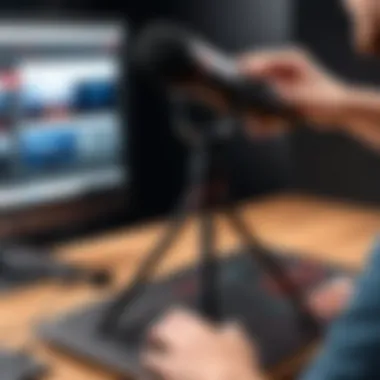
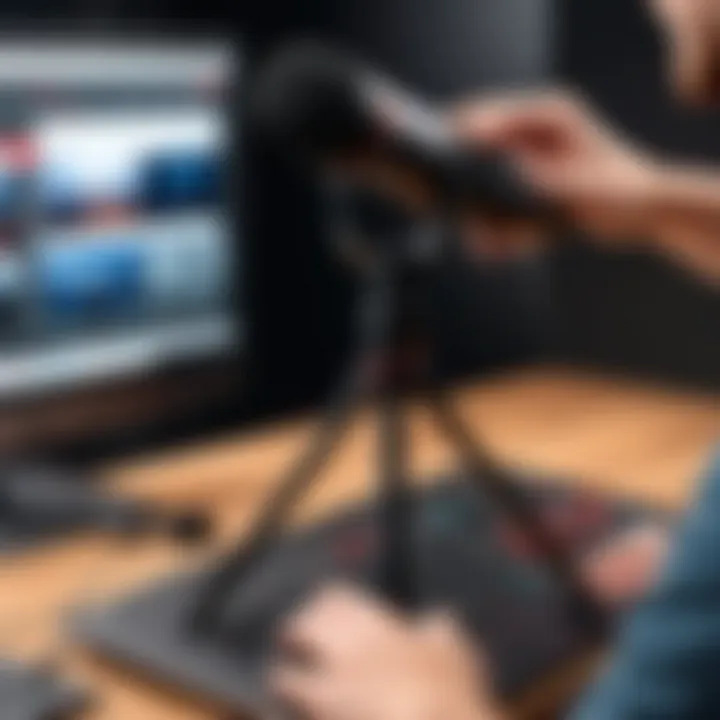
For instance, cardioid microphones are designed to capture sound mostly from the front, minimizing noise from the sides and rear. They're a popular choice for single-speaker setups, making them ideal for vloggers and podcasting scenarios. Conversely, if you're recording a group discussion, an omnidirectional mic, which picks up sound from all directions, might be the better option.
In short, matching the polar pattern with your recording environment is a surefire way to improve audio quality.
Build Quality and Durability
Last but certainly not least, consider the build quality and durability of the microphone. It’s easy to overlook this aspect, especially if you're on a budget, but a sturdy microphone can withstand wear and tear, travel, and unpredictable conditions.
For instance, if you're frequently recording outdoors, a microphone with a rugged design is going to serve you better than a lightweight, fragile one. Moreover, look for features like shock mounts or built-in pop filters, which can mitigate unwanted noise and extend the life of the microphone by avoiding physical damage.
Remember, a microphone is an investment. Considering build quality can save you future hassles and costs.
Selecting the right features in a microphone is akin your choosing a weapon for a battle. Having the best tools at your disposal can streamline your recording process and yield superior results, enhancing both viewer engagement and content impact. The next steps involve specific recommendations suited for various levels of creators, fully equipped with these features in mind.
Microphone Recommendations for Content Creators
When it comes to crafting high-quality YouTube content, selecting the right microphone is paramount. Your audio can make or break the viewer experience; subpar audio quality can turn away even the most interested audience. As content creators, you're competing not just with visuals but also with sound — a fantastic video can lose its sheen if the audio sounds like it's recorded in a tin can.
This section delves into microphone recommendations tailored for different types of creators. Whether you're starting your journey or are a seasoned professional, knowing the right microphone for your needs is a game changer. Let's break it down into suitable categories that will help you make an informed decision.
Best Microphones for Beginners
If you're just starting off, investing in a quality microphone shouldn't drain your wallet. The best microphones for beginners bridge price and performance without leaving you feeling like you've compromised too much.
- Audio-Technica AT2020: A solid choice due to its clear sound and reasonable price point. It's versatile and works well for vocals and instruments.
- Blue Snowball iCE: Ideal for those who are recording directly to their computer. Plug it in via USB, and you’re ready to go. The quality is impressive for its cost.
- Rode NT-USB: Easy to use and offers great audio capturing abilities, this mic comes with a pop filter, so you won't need to worry too much about unwanted plosives.
These options ensure that new creators are equipped to produce decent quality audio without becoming overwhelmed by technical specifications or breaking the bank.
Top Picks for Professional YouTubers
For those who have honed their craft and wish to elevate their audio game, high-end microphones come into play. Professional YouTubers need gear that captures every nuance and layer of sound without distortion.
- Shure SM7B: This dynamic microphone is a staple among many professionals. It’s excellent at rejecting background noise and focusing on the subject's voice, making it ideal for bustling environments.
- Rode NT1: Known for its incredibly low self-noise, the NT1 is perfect for studio recordings. This mic captures vocals with stunning clarity and detail.
- Sennheiser MKH 416: Often used in film production, this shotgun microphone is fabulous for dialogue capture. It works particularly well for narrative-driven content.
Investing in one of these models ensures that the final product has that professional sheen, enhancing the overall production quality.
Budget-Friendly Options for Casual Creators
Casual creators often seek an affordable yet effective solution. The market is filled with hidden gems that uphold audio clarity without the hefty price tag. Here are a few options:
- Fifine K669B: This USB microphone offers great performance for a budget price. Simple plug-and-play functionality means it’s easy for anyone to set up.
- Samson Go Mic: Portable and compact, it’s perfect for creators on the go. The sound quality is excellent for vlogs and outdoor recordings.
- MXL 770: An entry-level condenser microphone that provides good sound quality for its price. It's effective for various recording applications, from vocals to instruments.
In sum, whether you're a newbie, a seasoned pro, or creating casually, the right microphone will not just record sound, but help tell your story. A good setup knows no boundaries, and with the right tools, your content can shine brighter.
"Great audio isn’t just an accessory to your content. It’s the lifeline that connects your vision to your audience."
Choosing aptly can ensure your viewers stay engaged and return for more, reinforcing the importance of sound quality in any YouTube endeavor.
Optimizing Your Microphone Setup
Optimizing your microphone setup is not just a technical exercise; it’s an essential component of creating high-quality content on YouTube. The audio quality of your videos can significantly influence viewer retention and engagement. Therefore, it is imperative to ensure that your microphone setup is not only functional but also fine-tuned for the best performance possible. Small changes can make a world of difference.
Placement Techniques
One of the first steps in optimizing your microphone setup is placement. The positioning of your microphone can either invite or repel sounds that are critical for quality audio. For instance, placing the microphone too far from the sound source might lead to a hollow sound, while positioning it too close can result in undesirable peaks in volume.
When considering placement:
- Distance Matters: Maintain a distance of about 6 to 12 inches from your mouth. This helps in capturing your voice clearly while minimizing ambient noise.
- Angle is Key: Aim to have the microphone slightly off-axis from your mouth. This can smoothen harsh sounds that sometimes occur with direct sound input.
- Secure Every Aspect: Invest in a good stand or shock mount to eliminate vibrations and handling noise that could disrupt your audio.


More often than not, you may need to experiment with different positions before settling on the one that yields the best audio. Adjusting your environment, like moving furniture or even adding soundproofing elements, can also help.
Use of Pop Filters and Windscreens
Using pop filters and windscreens can be a game changer. They act as shields that protect your recordings from unwanted plosive sounds—those bursts of air that accompany letters like "P" and "B". Without them, these sounds could create an unpleasant listening experience.
- Invest in Quality: A simple pop filter can reduce the harshness of these sounds and help create a more balanced audio track. They are generally inexpensive and easy to use.
- Windscreens: For outdoor recordings, windscreens can make a big difference. They muffle wind noise effectively without interfering with voice clarity. Look for those that easily fit over your microphone type.
- Placement: Make sure to position the pop filter about 2-3 inches away from the microphone to achieve the best results.
Ultimately, these tools add that extra layer of professionalism to your audio.
Integrating With Audio Interfaces
Integrating your microphone with an audio interface is pivotal for unlocking your microphone's full potential. An audio interface serves as a bridge between the microphone and your computer, converting analog signals to digital signals for processing.
This integration comes with several benefits:
- Higher Sound Quality: Audio interfaces often offer better preamps than built-in sound cards, ensuring clearer and richer audio capture.
- Gain Control: Most audio interfaces let you adjust the gain levels directly, giving you precise control over your recordings.
- Multiple Inputs: If you're planning to use more than one microphone or instrument, a good interface will give you multiple inputs. This is particularly useful for podcasting or interviews where several voices need to be captured.
Epilogue
Optimizing your microphone setup, from placement and using pop filters to effectively integrating with audio interfaces, is critical in enhancing your YouTube content's audio quality. Taking the time to refine these aspects will pay off when your viewers experience a cleaner, more engaging sound that keeps them coming back.
"Good audio is half of the picture. Don't underestimate its impact on your content!"
By implementing these strategies, you ensure that your audio not only captures attention but keeps your audience fully immersed in what you're presenting.
Troubleshooting Common Microphone Issues
In the fast-paced world of YouTube content creation, even the best microphone setup can encounter hiccups from time to time. These issues aren't just minor inconveniences; they can drastically affect the overall production quality of a video, impacting viewer engagement and satisfaction. The importance of troubleshooting these common microphone problems lies in enhancing your content's audio integrity. A crisp and clear sound is often what sets a professional-grade video apart from a mediocre one. If a creator is quick to address issues like background noise or connectivity hiccups, they can maintain a polished image in front of their audience.
Dealing With Background Noise
Background noise can be the thorn in the side of any YouTube creator. Whether it’s the whir of a laptop fan, distant chatter, or the hum of an air conditioner, these unwanted sounds can creep into recordings and dilute the message you're trying to convey. To combat this, it's critical to identify the source of the noise. Adjusting mic placement is a simple yet effective fix; get that microphone closer to your mouth while moving it away from sound sources when possible.
"A quiet setting is your first line of defense against background noise."
Additionally, consider employing directional microphones, which pick up sound from a specific direction. This helps to cut out noise from the sides or rear. Soundproofing your recording space can also be a game-changer, employing foam panels or even blankets to absorb stray sounds.
Low Volume and Poor Clarity Solutions
Nothing frustrates viewers quite like a video where the host sounds like they’re whispering from a different room. Low volume and poor clarity can ruin even the most engaging content. If you're facing this issue, start by checking the gain settings on your microphone. Most modern microphones allow adjustments to gain levels, providing control over how loud the input is.
If you're still battling low volume, you may want to invest in a good quality microphone preamp or an audio interface with more robust features. These tools not only improve volume but also enhance clarity, making a significant difference in the final audio output. In post-production, inspect your audio waveform. If it's too low, sound editing software can aid in boosting the levels without distorting the audio too much. However, this should be a last resort — fixing it at the source is always better.
Identifying Connectivity Problems
Have you ever found yourself in the middle of a recording when the audio just drops out? Connectivity issues can be particularly vexing, especially if you're using USB microphones or external sound interfaces. Start by ensuring that all cables are securely connected and check for any signs of wear and tear. Sometimes, a simple unplug and replug can resolve an issue.
If these basic steps don’t yield results, delve deeper. Test your microphone on a different device to rule out hardware malfunctions. You might also want to look into your computer settings for audio input. Ensure the right microphone is selected, and that no mute switches are inadvertently engaged. Regular software updates can also help mitigate issues, as drivers need to be up-to-date to maintain compatibility with systems.
By addressing these common microphone issues proactively, you’ll ensure that your audio quality remains top-notch, thereby enhancing your YouTube experience for both you and your viewers.
The Future of Microphones in Content Creation
As the digital landscape for content creation continues to evolve, so does the technology behind microphones. The future of microphones in YouTube and other digital platforms is not just about enhancing audio quality; it's about responding to the changing needs of content creators and their audiences. With advancements in technology, microphones are becoming smarter, more versatile, and increasingly user-friendly. This section dives into what we might anticipate regarding microphone innovation and its implications for content creators.
Emerging Technologies in Microphone Design
New technologies in microphone design are making waves, driven by the demands of professional demands, casual creators, and everyone in between. Here are some noteworthy advancements:
- Digital Processing: Modern microphones are integrating more digital signal processing (DSP) capabilities, allowing for sophisticated audio manipulation directly within the microphone itself. This means effects such as noise cancellation, equalization, and even compression can be handled on the fly, eliminating the need for post-production adjustments.
- Wireless Technology: The push for wireless equipment is changing how content creators operate. New models are coming with improved battery life and connectivity options, minimizing audio drops and interference. The result is greater freedom for creators, especially those filming on location.
- Smart Microphones: Devices equipped with AI assistants are on the rise. These microphones can automatically adjust settings based on the environment, which is a huge boon for creators working in various sound conditions. Imagine a microphone that knows when to filter out background noise or refine vocal clarity without manual inputs.
- 3D Audio Capture: This technology allows creators to record sound in a way that attempts to replicate how the human ear hears it, adding depth and spatial awareness to audio content. This could be particularly beneficial for immersive content like ASMR or virtual reality experiences.
- Modular Designs: Some of the newest microphones are designed to be modular, allowing creators to customize their devices according to their unique needs. This flexibility can make a significant difference in optimizing for different recording environments or types of content.
"Investing in the right microphone is not just about sound; it's about creating an experience that connects with the audience at a deeper level."
The implications of these advancements are significant. Content creators can expect to see enhanced audio quality that complements their visuals, fostering a more engaging viewing experience. However, along with the evolution comes a necessity for creators to understand these technologies. As features become more sophisticated, the importance of selecting a microphone that matches both their skill level and content style will become paramount.
In summary, the future of microphones is bright and full of possibilities. Whether you are just starting or a seasoned creator, staying informed about the latest technologies can dramatically affect the quality and appeal of your content. Exploring these developments will not only enhance sound quality but also elevate overall production value, making your videos more enjoyable for viewers.







